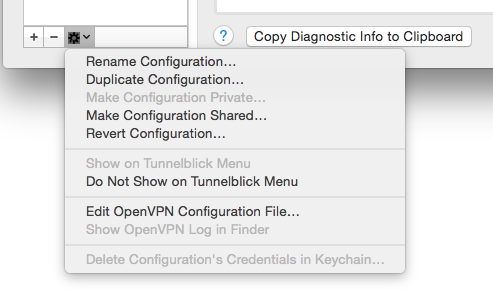

To access Tunnelblick.app/Contents in the Finder, control-click Tunnelblick.app in the Applications folder, then click on "Show Package Contents”. Within the Tunnelblick.app application, client up/down scripts and openvpn-down-root.so are located in Tunnelblick.app/Contents/Resources (see the "Set nameserver” checkbox in the "OpenVPN Log Window” section). See the Deploying Tunnelblick wiki for details of file locations when using a deployed version of Tunnelblick. (See "useShadowConfigurationFiles" in the "Preferences" section.) Shadow" copies of configuration files (if they exist) are located in /Library/Application Support Tunnelblick/Users/ username. Since these files are all located in the user's Library folder, they must be set up separately for each user.īut note that deployed versions of Tunnelblick contain the configuration file(s), so they do not need to be set up for each user - any user that can access Tunnelblick.app can connect to VPN. Usually the key and certificate files are stored there, too. OpenVPN configuration files are stored in ~/Library/openvpn. Tunnelblick preferences are contained in ~/Library/Preferences/.

See the Deploying Tunnelblick wiki for details. When using a "deployed" version of Tunnelblick, configuration files are all located within the Tunnelblick application itself, so ~/Library/openvpn is not used. (Note that some OpenVPN options are available only on Windows.)

Refer to the OpenVPN documentation for details about what the configuration file should contain. (The "~" refers to your home folder.) Often these configuration files will be supplied to you. ovpn to be a configuration file, and presents each such file as a potential "connection”. Tunnelblick considers any file located in ~/Library/openvpn with an extension of. Each tunnel to be opened by Tunnelblick needs an OpenVPN configuration file.


 0 kommentar(er)
0 kommentar(er)
